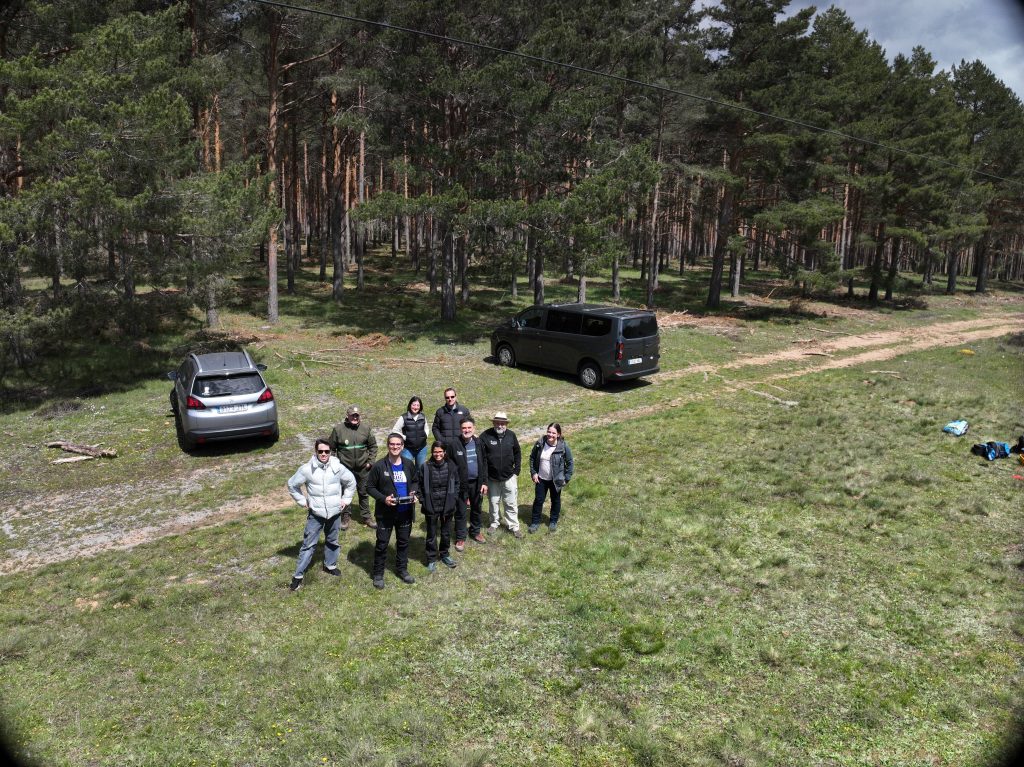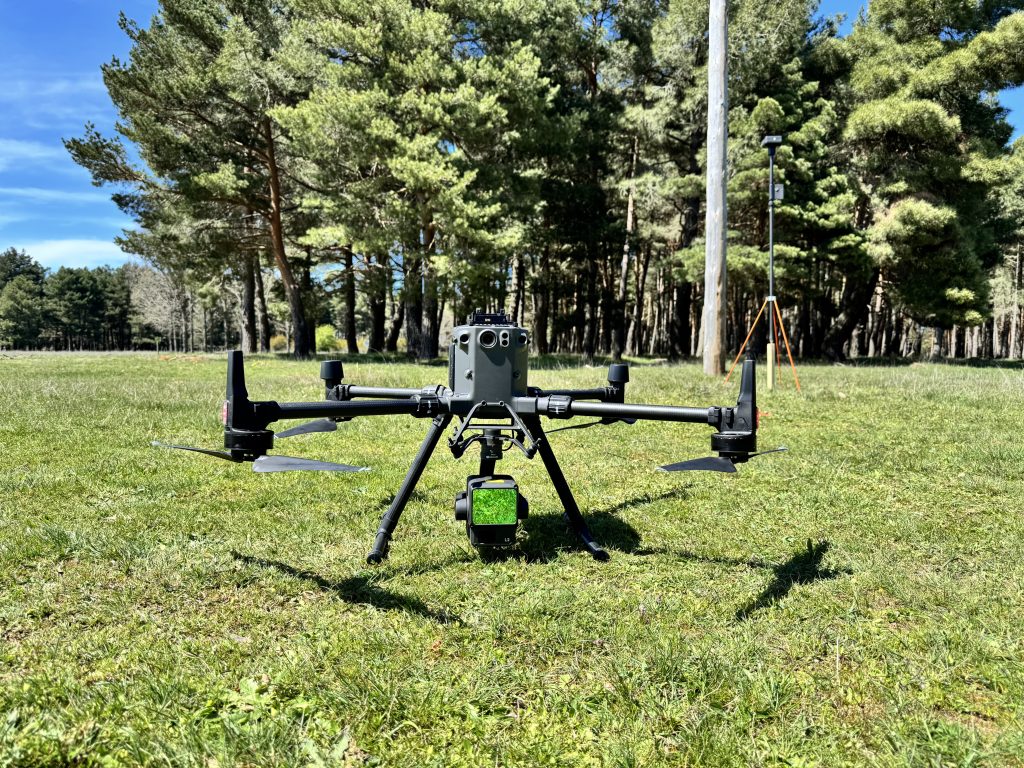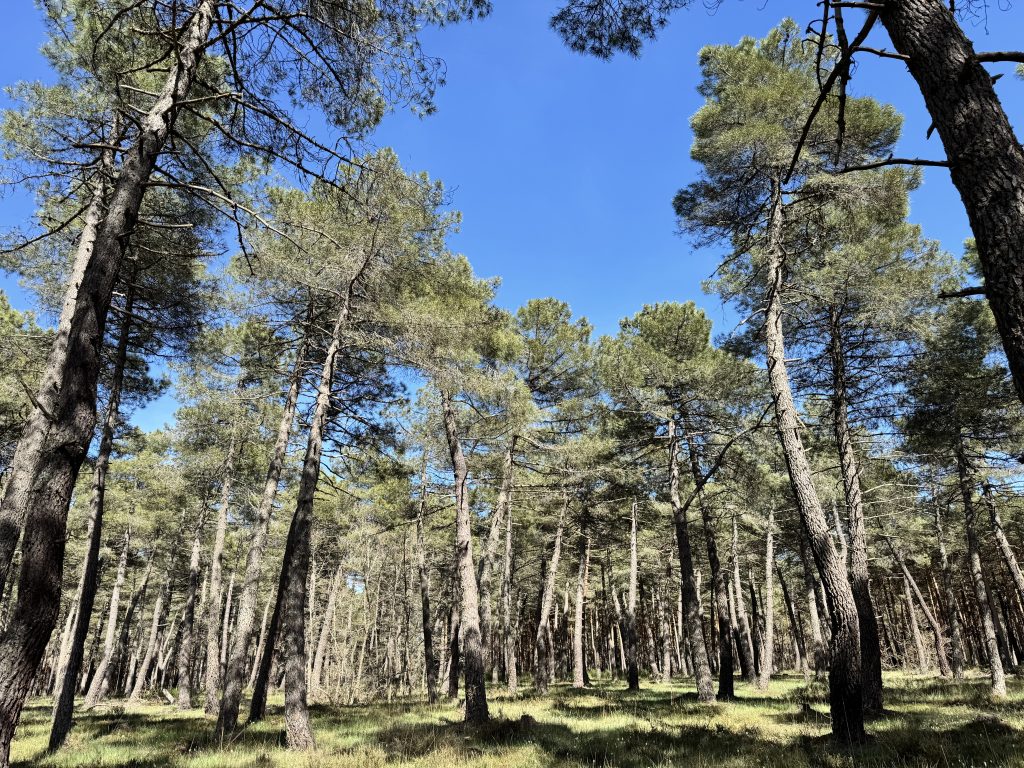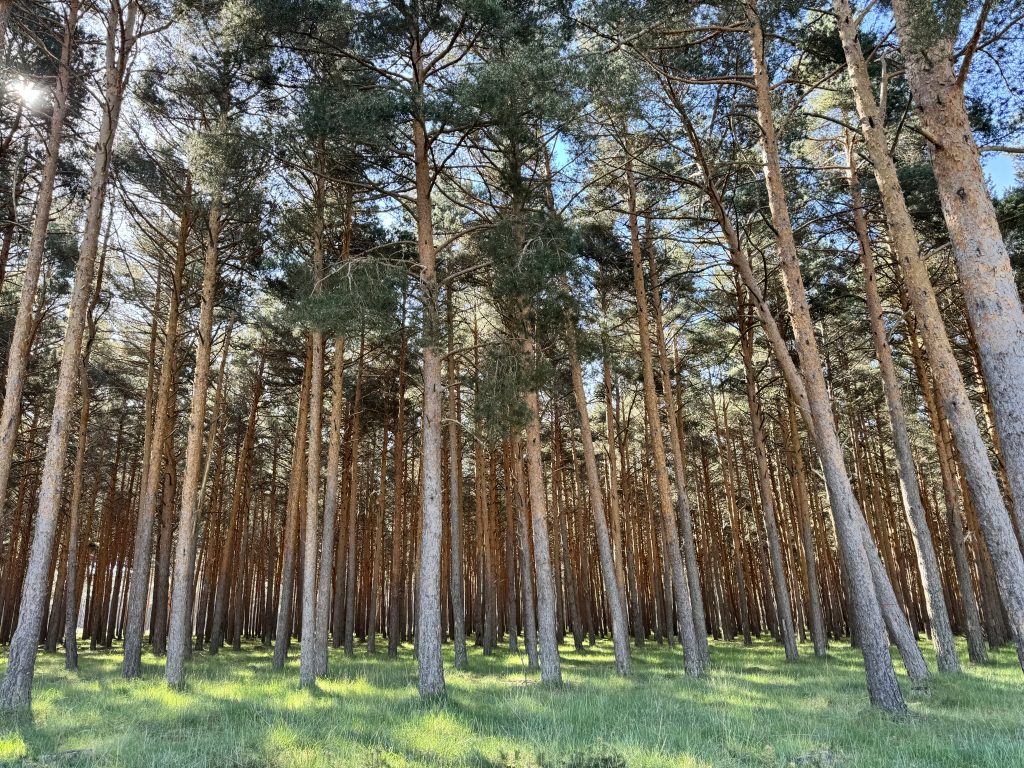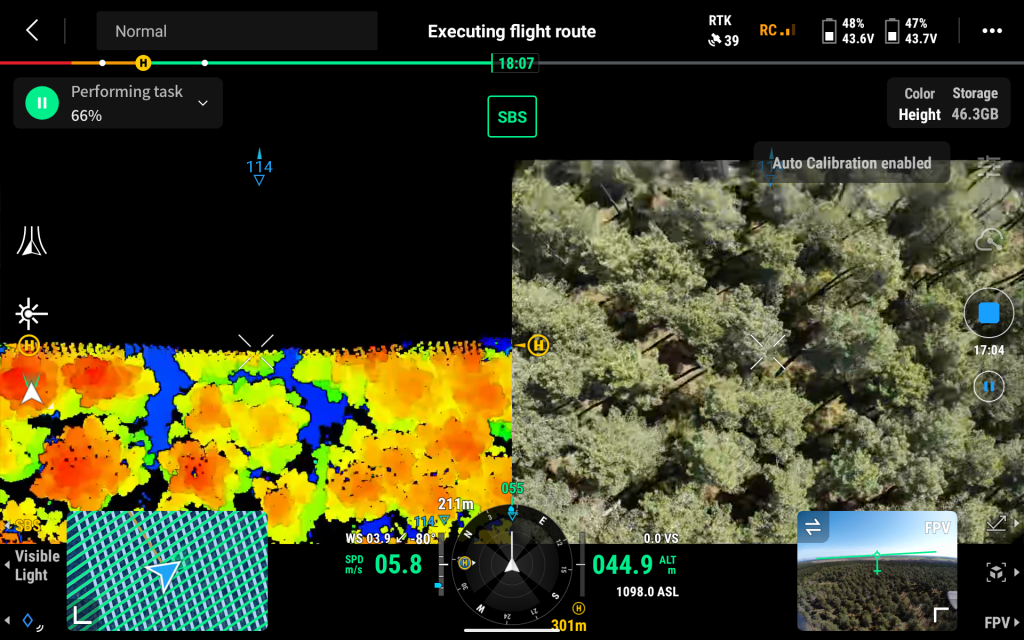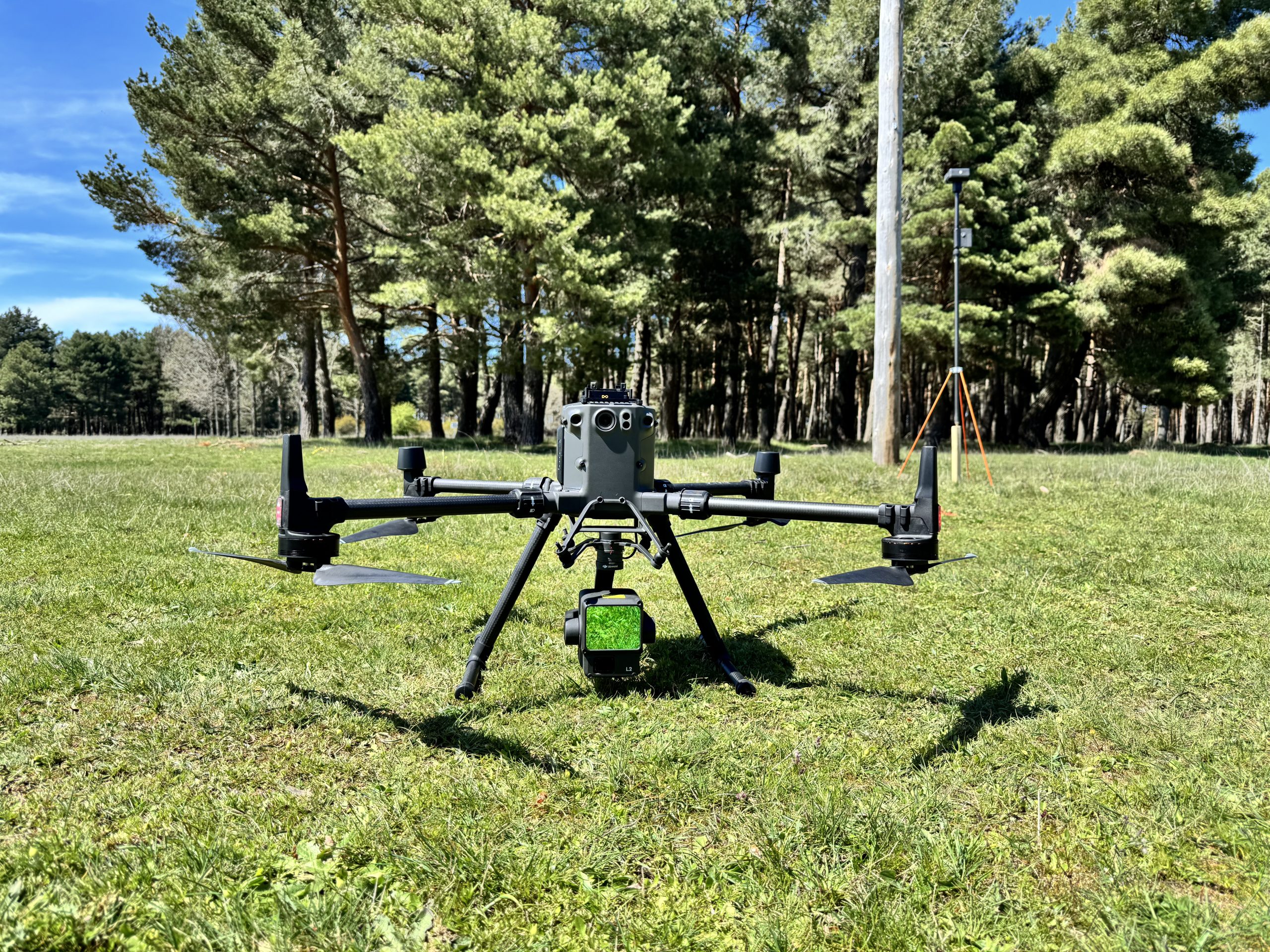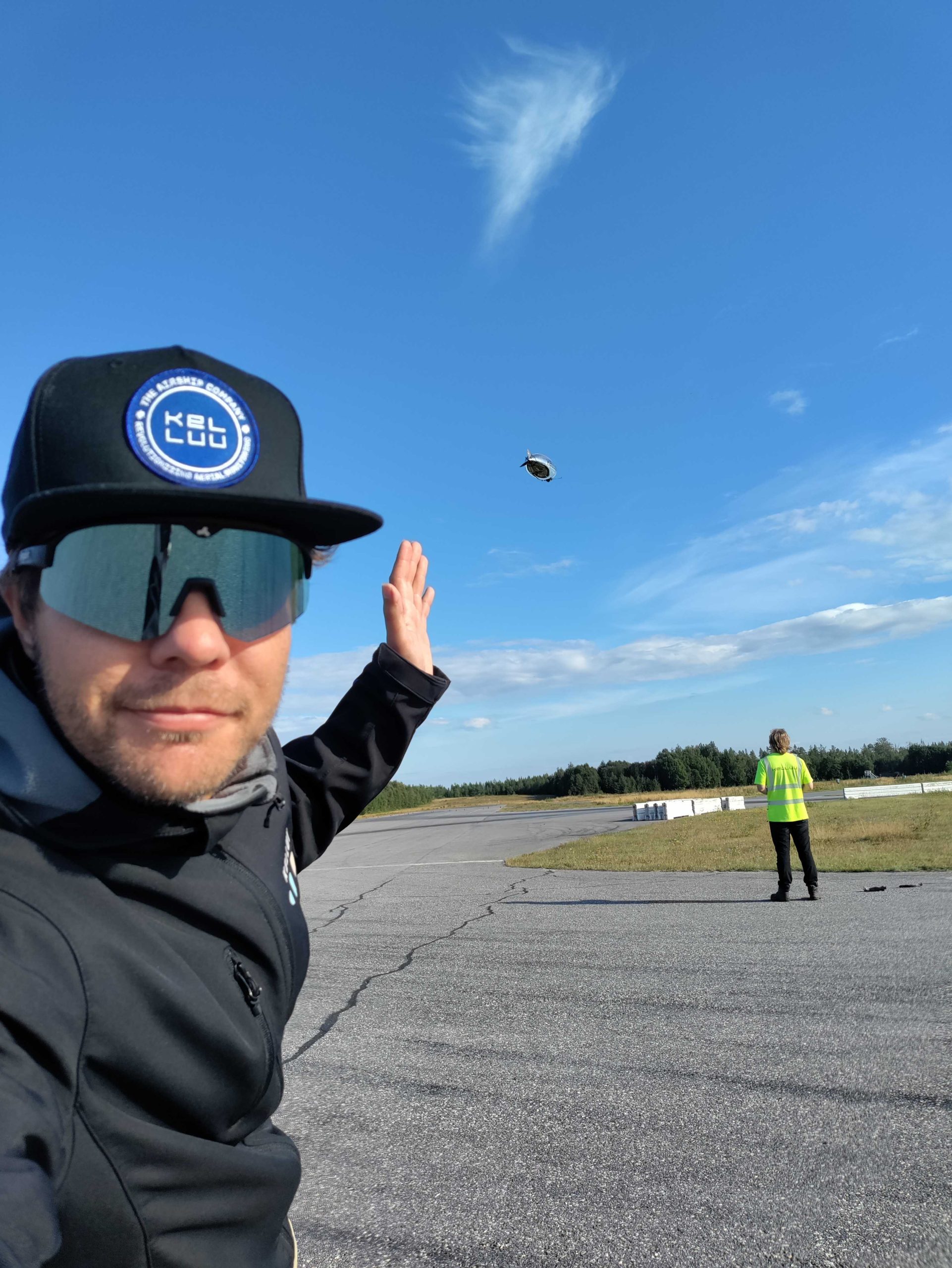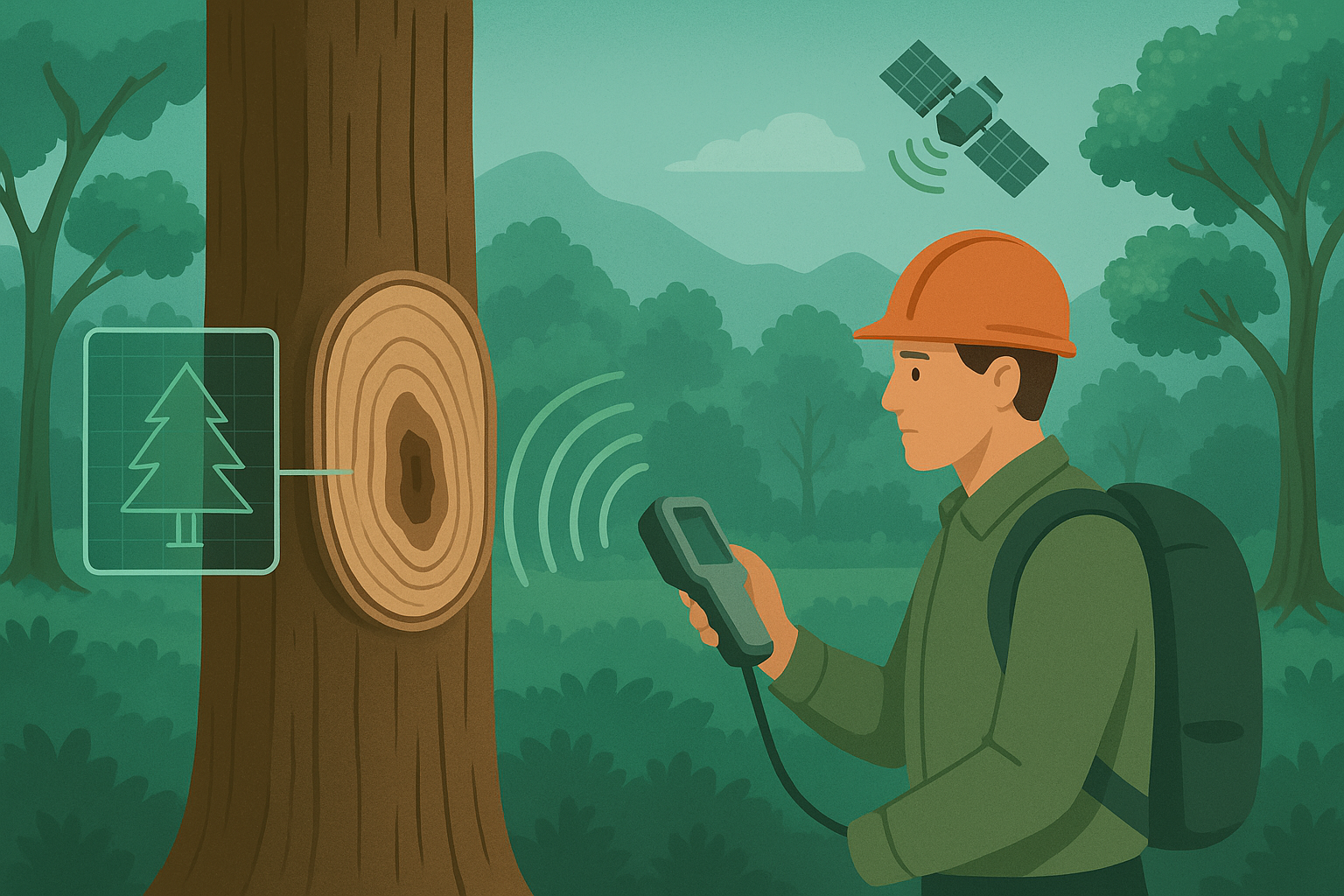Between April 28 and May 22, 2025, researchers from the University of Valladolid (UVA), a key partner in the EU-funded SingleTree project, carried out the first phase of intensive field data collection in Valdepoza, Saldaña, located in the Castilla y León region of Spain. This site, part of SingleTree’s Southern Living Lab, is set within a Mediterranean climatic zone, making it a critical location for testing adaptive forest management strategies under climate stress conditions.
The study area covers 78 hectares and comprises 16 sample plots. Forest composition is dominated by Pinus sylvestris, Pinus nigra, and Quercus pyrenaica, with a minor presence of Pinus pinaster.
What sets this effort apart is its hybrid approach: UVA researchers combined traditional field inventory methods with advanced remote sensing technologies. Using Unmanned Laser Scanning (ULS), they captured ultra-high-resolution 3D point cloud data, while Handheld Laser Scanners (HLS) were deployed for data validation. In parallel, multispectral imagery was collected to aid in tree species identification.
This data collection is part of Work Package 1 (WP1) on single-tree monitoring and Work Package 2 (WP2) focused on adaptive management. Once processed, the data will be used for assessing the outer wood quality and forest biodiversity, and will inform the development of innovative single-tree management criteria and risk management solutions.
“This is a foundational step in achieving the core goals of SingleTree,” says the UVA team. By linking high-resolution data to forest dynamics at the individual tree level, we’re moving toward forest management that is both data-driven and ecologically sensitive.
The work in Valdepoza contributes directly to SingleTree’s Strategic Objectives:
- Develop AI and remote sensing-enabled single-tree forest monitoring for health, wood quality, and biodiversity assessment.
- Create adaptive, micro-stand level management solutions that enhance resilience and multifunctionality in European forests.
Looking ahead, the next phases will involve further field-based data collection, advanced data processing, and post-harvest assessments, as the project continues to lay the groundwork for a new generation of precision forestry tools.
